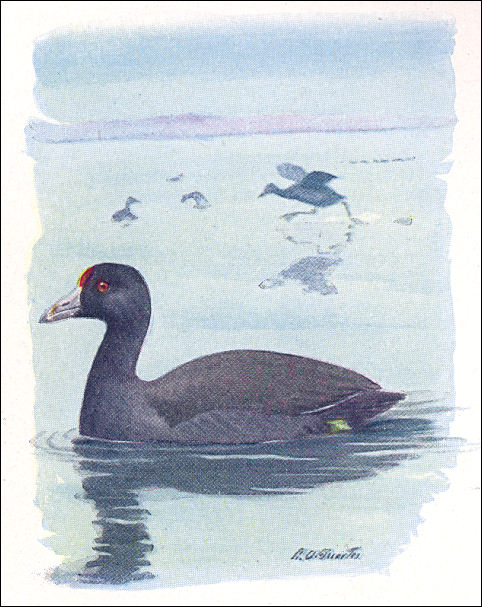
Ecologists seem to have special terms for almost everything. Have you ever, for example, heard the word "commensal" bandied about in polite conversation? The term refers to a kind of relationship between individuals belonging to two different species. Because of this relationship, one of the individuals receives some type of benefit, but the other neither receives a benefit nor is it adversely affected.
Commensalism is widespread, but perhaps easiest to observe between
birds and mammals or between different kinds of birds. The phenomenon is well known
between grazing bison or cattle and any of a number of species of birds who follow
along behind, snatching up insects disturbed by the ruminants. Or wander around down by
the Rio Grande, and you might see an American Coot assiduously following along behind a
Pintail, grabbing the leavings stirred up by the duck. Coots are known to follow behind
at least four different species of ducks, knowing a good thing when they see it. Why
the name "commensal"? Maybe its derivation gives a clue. It's from the
Latin, meaning "of the table". 
Listen to the Audio (mp3 format) as recorded by KTEP, Public Radio for the Southwest.
Contributor: Arthur H. Harris, Laboratory for Environmental Biology, Centennial Museum, University of Texas at El Paso.
Desert Diary is a joint production of the Centennial Museum and KTEP National Public Radio at the University of Texas at El Paso.

American coot, by Louis A. Fuertes. From Henshaw, 1921.
Henshaw, H. W. 1921. The book of birds. Common birds of town and country and American game birds. National Geographic Society, 195 pp.